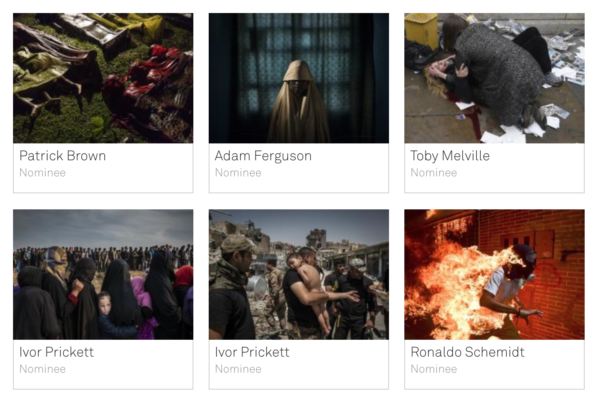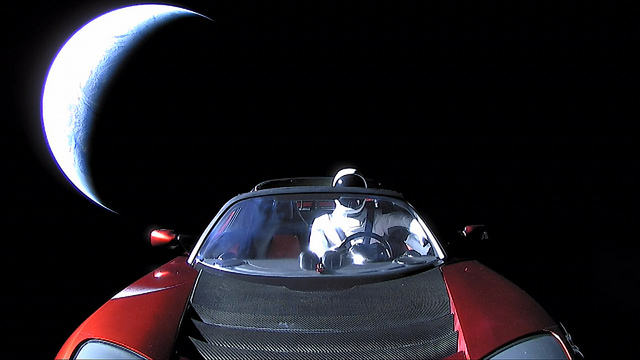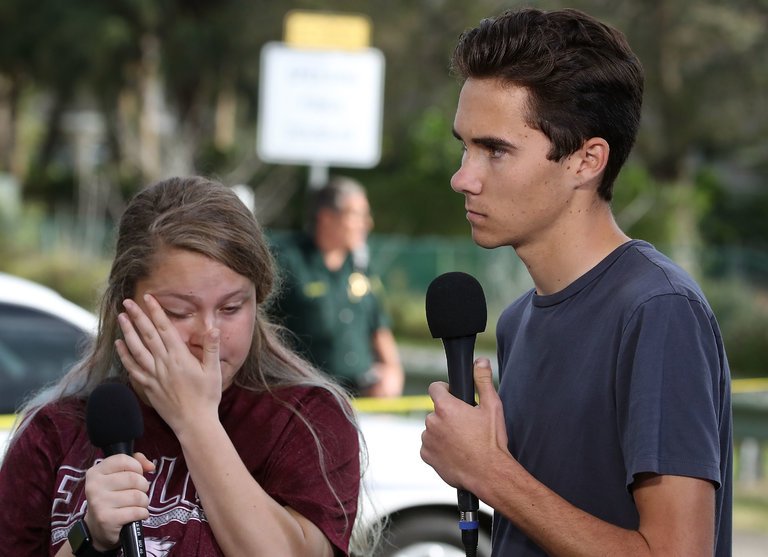Notes
Gender and the World Press Photo 2018 Award Finalists

The fact World Press Photo has shifted to an “Academy Awards” style process this year has produced a curious result. I am no longer interested in who (or, which man) will win the photo Oscar for picture of the year. The singular highlight on the six finalists, however, has become far more interesting. Freeing us from reflecting on the selection and meaning of a singular image, the collection above encourages us to consider the dynamics of an entire edit. It’s a mirror reflecting the tastes and preferences of the contest and a proxy for the photojournalism field itself.
Given the kaleidoscopic options for analysis, however, I’m mostly interested in one particular angle. For half a year now, catalyzed by the outing of Harvey Weinstein last October, the western world has been gripped by a fever. In this stretch of time, gender has become a critical lens. As the premier photo contest in the world, the WPP process and the WPP selections–like every set of creative awards this year–become an unavoidable manifestation of that.
The cultural moment was surely not lost on the organization. Gender, racial, geographic and class inequality was a heightened concern before the current storm. In good conscience, WPP invested a lot of effort this year encouraging women across continents to enter the contest. The judging panels also aimed for balance. Still, the fact remains that the number of women entrants (18%) showed only a slight increase from the year before. Even more disheartening is the fact that only 5 of the 51 category nominees that the panels selected were women, and, of course, no woman photographer is included among the top prize finalists above.
Clearly though, the problem is deeper and more systemic. You needn’t look further than this set of images to appreciate that. (Note: all the photos, 1, 2, 3, 4, 5 and 6, are linked to here, and in the credits below.)
It’s a bleak preoccupation with war, misery, subjugation and terror. More specifically, the photos confine themselves to the instrumentality of oppression and persecution. The photos feel impersonal and fatalistic. There is not one gaze offered in five of the six images (or six out of six, reasonably assuming the woman bleeding out is in shock, or worse). There is not one photo that begins a dialogue, that poses a question, that does anything other than hit us upside the head. In my mind at least, a great news photograph, even an abject one, should elicit tension, ambiguity, curiosity, some range beyond pity. Temple of horror fine, it should still allow you to enter somewhere.
It’s nihilism across the board. It’s not masculine by definition, of course, but a blunt and muscular conception wins out.
Further concerning to me is the way women are depicted across the grouping—if they are depicted at all. What I have to ask is, in the current cultural moment, in the atmosphere of #MeToo, at the same time the rest of culture and art has become so awake and every other award lineup is being so scrutinized, how do we reconcile this edit? Only three of the six photos discernibly feature women. Of the three, two are notable for victimization and the third for destitution. The woman in the burka was kidnapped by Boko Haram, strapped with explosives, and ordered to blow herself up in a crowded area. She managed to escape, but at what emotional cost? In the anonymity and ambiguity of the photo (knowing only this much from the caption), she is valorized for her victimization as much or more than her resourcefulness or bravery. The Mosul photo (bottom left) shows the women foregrounded from the men in a collective destitution. If a young girl stands out, fate dominates her individuality. Finally, the image of the woman shot in a terror attack on the Westminster Bridge unwittingly situated the photo in the frame of violence against women.
Thankfully, many are advocating ever more vigorously for equality in photojournalism. The emergence of Women Photograph, the agency representing women and the gender nonconforming, and a group that stands on the shoulders of female photographers and other critics who have spoken out for decades, has evolved into a particularly important vehicle. That being said, though, the aim for photojournalism is nothing less than a level playing field and a sense of equanimity that would render the gendered focus and critique here simply odd, if not academic. It’s not going to happen overnight.
-Michael Shaw
(Images clockwise from top left: Photo 1: Patrick Brown/Panos Pictures/Unicef Caption: September 28, 2017, The bodies of Rohingya refugees are laid out after the boat in which they were attempting to flee Myanmar capsized about eight kilometers off Inani Beach, near Cox’s Bazar, Bangladesh. Around 100 people were on the boat before it capsized. There were 17 survivors Caption: Photo 2: Adam Ferguson/New York Times Caption: September 21, 2017, Aisha (14) stands for a portrait in Maiduguri, Borno State, Nigeria. After being kidnapped by Boko Haram, Aisha was assigned a suicide bombing mission, but managed to escape and find help instead of detonating the bombs. Photo 3: Toby Melville/Reuters Caption: March 22, 2017, A passerby comforts an injured woman after Khalid Masood drove his car into pedestrians on Westminster Bridge in London, UK, killing five and injuring multiple others. Photo 4: Ivor Prickett/New York Times Caption: March 15, 2017, Civilians who had remained in west Mosul after the battle to take the city line up for aid in the Mamun neighbourhood. Photo 5: Ivor Prickett/New York Times Caption: July 12, 2017 An unidentified young boy, who was carried out of the last ISIS-controlled area in the Old City by a man suspected of being a militant, is cared for by Iraqi Special Forces soldiers. Photo 6: Ronaldo Schemidt/AFP Caption: May 3, 2017 José Víctor Salazar Balza (28) catches fire amid violent clashes with riot police during a protest against President Nicolas Maduro, in Caracas, Venezuela. Sanctuary in northern Kenya. Commissioned by Agence France Presse.)


Reactions
Comments Powered by Disqus